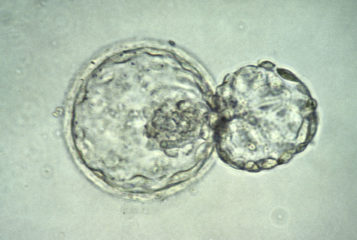Genetics and stem cell research have been combined for the first time to correct a genetic mutation associated with liver disease. This new approach could lead to people with a genetic disease being treated with their own cells.
The research 'represents a first step towards personalised cell therapy for genetic disorders of the liver', said Dr Ludovic Vallier of the University of Cambridge's Anne McLaren Laboratory for Regenerative Medicine, one of researchers involved in the study.
The study, published in Nature, used cells containing the genetic mutation linked to liver disease taken from a patient to produce iPS cells. These stem cells can differentiate into other types of cells, such as liver cells, but cannot instantly be used in humans as they contain the corrupted genetic code responsible for the disease.
To correct the mutation, the researchers used an engineered molecule which removed the faulty sequence in the gene, replacing it with a functioning sequence. The stem cells were then grown into liver cells and tested both in the lab and in mice, where they 'functioned beautifully with normal secretion and function', according to Professor David Lomas, deputy director of the Cambridge Institute for Medical Research, University of Cambridge, who was involved in the study.
The researchers examined a gene which protects against inflammation in the liver by producing a certain protein called α1-antitrypsin. In people with a mutation in the gene the protein becomes trapped in the liver which can lead to cirrhosis and eventually liver failure. When the corrected cells were transplanted into mouse livers, the researchers found that the cells had integrated and begun to produce and release protein appropriately.
The authors suggest this approach is significantly more efficient than other gene-targeting technologies currently available. 'Most gene therapy is not correcting the gene, it's introducing a new copy of the gene', said Robin Ali, Professor of Human Molecular Genetics at University College London, who was not involved in the study. 'What's exciting is that this corrects', he added. Dr Vallier explained further: 'The genetic correction doesn't increase the number of genetic anomalies that you can find in iPS cells'.
The research is still at a very early stage, however, and the study was aimed simply to develop the technique. According to the BBC, Professor Lomas said the technique was 'ridiculously hard', but acknowledged 'the potential is enormous'. 'The key thing is safety', he said, and further research and clinical trials are needed before any treatments can be developed.
Sources and References
-
Stem cells 'could fight genetic diseases'
-
Gene therapy and stem cells unite
-
Liver-disease mutation corrected in human stem cells
-
Targeted gene correction of α1-antitrypsin deficiency in induced pluripotent stem cells
-
Genetic liver conditon corrected with stem cells
-
Skin transformed into liver cells to treat an inherited disease
-
New gene therapy corrects mutation in patient’s stem cells






Leave a Reply
You must be logged in to post a comment.